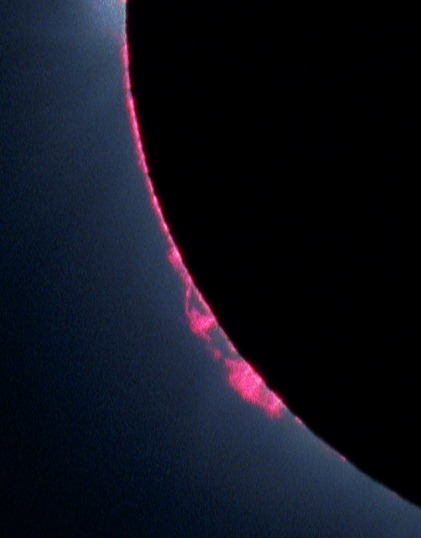Prominences are dense clouds of material suspended above the
solar "surface" - photosphere by loops of
magnetic field. They can remain in a quiet state for days or weeks
and "hang above the Sun". However, as the magnetic loops which support
them change, prominences can become instable and disappear over
the course of a few hours or even minutes. The typical prominence can
reach a height of about 50,000 km above the photosphere but prominences
which reached the height of several solar radii were exceptionally observed too
(solar radius is about 696 thousand kilometers). Since 1931 when the French
optician and astronomer Bernard Lyot invented the coronograph it is very easy
to observe prominences and it is not necessary to wait for a total solar
eclipse. When the Sun is observed by means of a spectrograph or a filter
that isolates the H-alpha emission prominences can be seen not only above the
solar limb but also around the whole visible solar hemisphere. If the prominence
is projected on solar disk it is dark because it absorbs the light on H-alpha line
wavelength and emits the light of the same wavelength to all directions. In this case
it is called filament. All mentioned observing methods enable to study
prominences at any time but if you would like to enjoy their fascinating
H-aplha red color you must wait for the total solar eclipse. I shall never
forget the view through the viewfinder of may camera mounted on Maksutov -
Cassegrain telescope. The color combination of H-alpha red with the
cool white of solar corona and blue sky was magnificent. I remember my
apprehension if it would be possible to record the beauty on the film.

